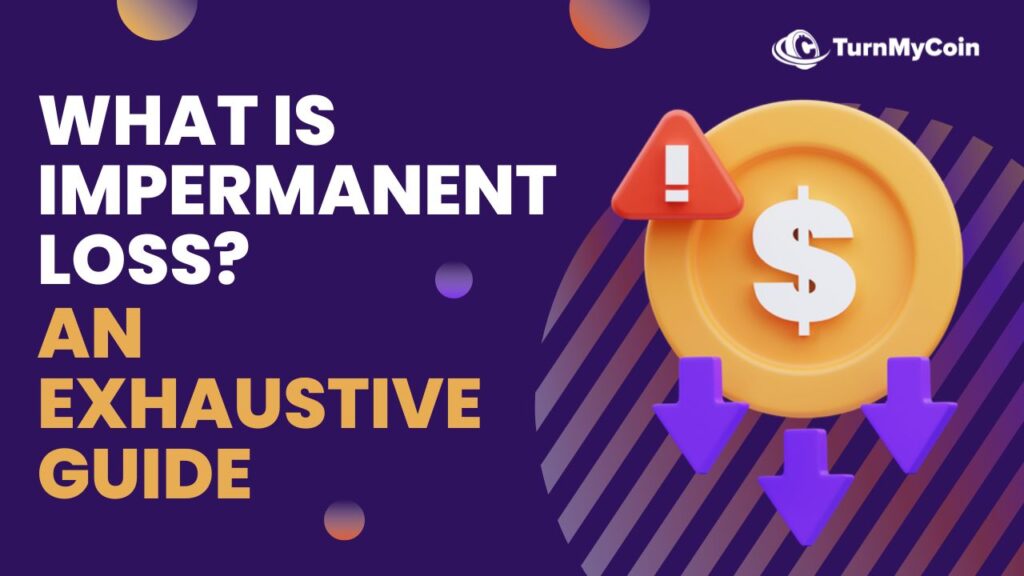Last updated on August 7th, 2024 at 11:37 am

Introduction
When we talk about Defi in Cryptocurrencies, we’re usually talking about decentralized financial products (or ‘DFPs’). These digital assets act like debt instruments but are not backed by any government or traditional financial institution.
They are instead created and supported by a network of computers that run on software called smart contracts.
If Investors want to invest in these DFPs they need a system that allows them to store their funds safely. While they wait for them to mature into something more valuable. This is where liquidity pools come in.
Liquidity pools offer users a place to store their digital assets. While users wait for their investments to go up in value to withdraw them safely and sell them on for profit later.
Now, Impermanent loss is the loss that you suffer while your investment is at these Liquidity Pools. Impermanent loss refers to the amount of money you lose during volatility. This often occurs because of market volatility, which causes prices to fluctuate rapidly up or down.
We will get to impermanent loss in a little while after we understand what Liquidity Pools are.
What are Liquidity Pools and how do they work?

A liquidity pool is an off-chain mechanism where users can deposit their assets. In return, users receive a proportional share of the profits made by the pool’s trading activities.
In this way, it enables users to participate in the trading process. Without having to deal with any of the risks associated with holding tokens themselves.
The process of creating a liquidity pool begins with creating a smart contract. It holds all user funds in escrow until they are released back into the community.
The smart contract also contains logic for managing deposits and withdrawals. As well as calculating profit distributions based on how much money has been contributed by each member over time.
A liquidity pool is designed to maintain the order book by providing bids and asks. It is for all tokens on the platform. So there is always sufficient liquidity for traders to buy or sell tokens at any given price. The size of the liquidity pool varies depending on how much money is being invested in it.
What is Impermanent Loss?
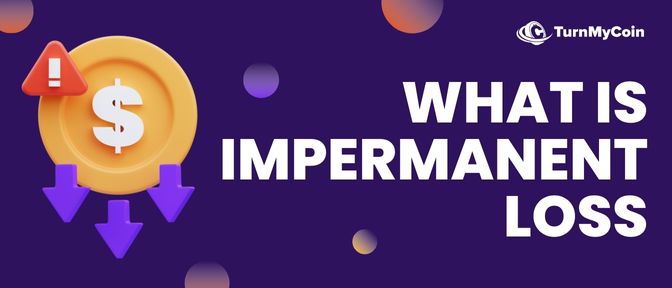
With a basic understanding of a Liquidity Pool, now we can continue with our discussion on Impermanent Loss.
Impermanent loss is better understood as OPPORTUNITY COST. This is when you provide liquidity to a given pool and the price of your assets in the pool changes during the time your assets are locked in.
The term “impermanent loss” refers to a loss that is not permanent. At a basic level, the larger the price change in a trade, the greater the loss on that trade.
However, if you withdraw your capital from the liquidity pool before your position closes, your loss becomes permanent. The higher the value of your portfolio, the larger your potential loss.
This is because, with high-value portfolios, there is more at stake for each trade. If you are able to keep your funds within your account until all positions are closed and settled. In that case, you will not incur any permanent losses as a result of trading on our platform.
How To Avoid Impermanent Loss?

Liquidity providers can’t eliminate the risk of impermanent loss, but they may choose stablecoin pairings and avoid volatile combinations to mitigate this impermanent loss. This is where a stablecoin like Dai comes in.
Dai is pegged to the U.S. dollar, so it’s not subject to the same volatility as other cryptocurrencies. Liquidity providers arrange trades between buyers and sellers of digital assets, helping them avoid impermanent losses by providing liquidity and facilitating transactions.
The algorithm of the Liquidity Pool balances your assets and DAI in a manner that your returns are always given priority and are placed at the highest value.
Take a Look at The Way To Avoid permanent Loss
1. Implement trading fees
One way is to implement trading fees. Liquidity pool participants pay the trading fees, which the liquidity pool operator collects. This amount is frequently sufficient to cover any temporary liquidity shortfall or impermanent loss in the pool.
If more trading fees are collected, fewer examples of impermanent loss will exist.
2. Complexity in liquidated pools
In any liquidity pool, impermanent loss happens for a variety of reasons. One of the explanations for this is the existence of complexity in liquidity pools.
The most common requirement for liquidity pools is an equal half split, which means that any participant with more than that amount must sell at least half of their position in order to remain within the stipulations of the pool.
Cryptocurrency prices can often be more excellent, with less risk of temporary loss when compared to other investment pools that split liquidity at fifty percent.
3. Keeping Volatility low
Voluntary cryptocurrency exchanges are susceptible to impermanent loss. Therefore, you should use a pair of cryptocurrencies with less variable exchange values to control any situation of temporary loss.
On the other hand, if there is no price fluctuation for one cryptocurrency, the impermanent loss may be prevented to a greater extent. Impermanent loss is one of the biggest concerns for cryptocurrency users.
It can happen when you trade on a platform that needs more liquidity or when you make an incorrect trade decision.
4. One-sided liquidity pools
When you’re trading on an exchange, you need to be able to quickly and easily convert your cryptocurrency assets into another cryptocurrency asset. This is what liquidity pools are for.
The most common type of liquidity pool is the one-sided liquidity pool, which only allows users to deposit cryptocurrencies into it but not withdraw them.
Example
A good example of this is Bancor’s ETH:BNT liquidity pool.
For every ETH deposited in this pool, the system adds an equivalent amount of BNT. This means that there is no risk of impermanent loss if someone were to try and withdraw their ETH from the pool before their BNT has been allocated.
However, other platforms such as Bancor offer a different kind of liquidity pool too—a two-sided one—allowing users to deposit and withdraw assets from it. In these cases, users can choose between staking only one side (the other side will be made up with BNT) or both sides at once.
What is Impermanent Loss Protection?
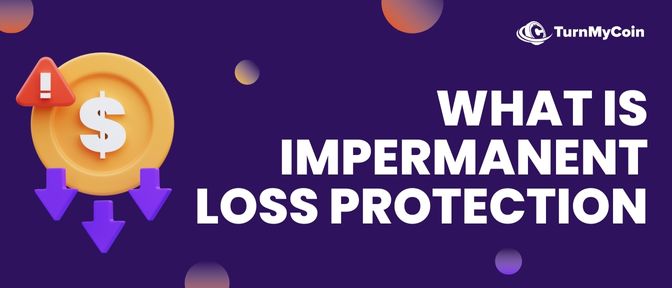
Impermanent Loss Protection (ILP) helps to ensure that liquidity providers will not sustain a loss on their holdings when exposed to the liquidity of the pool. When liquidity providers commit to providing liquidity, they are agreeing to hold their capital in a position that may be closed at any time.
ILP helps to protect these providers from losses due to market movements and other factors outside of their control, such as changes in regulation. If liquidity providers suffer losses, they can activate ILP to protect themselves against impermanent loss by staking tokens on a farm.
How is Impermanent Loss Estimated?
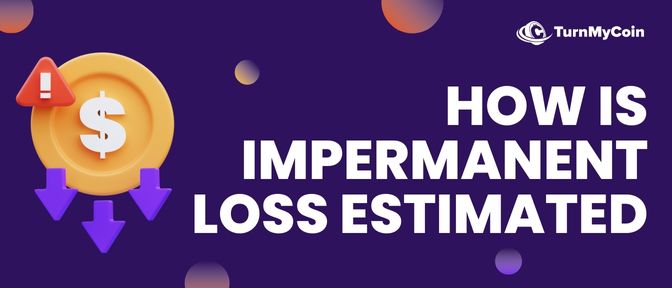
Impermanent loss is the amount of money you lose when you sell a security at an unfavourable price. This can happen when prices drop unexpectedly, or it can happen when there is a sudden change in the rate of exchange between different currencies.
Impermanent losses are estimated on the basis of the value of your security. Nonetheless, this value can be altered over time.
Your loss is considered permanent when you sell or exchange your security after a price decrease. Let’s look at an example of ETH/DAI. Say, the new ETH/DAI rate is 200:100, so traders can replace Ethereum and put in DAI until the ratio reflects the new price.

This means that traders can replace Ethereum and put in DAI until the ratio reflects the new rate. There is a complicated formula for calculating this ratio, but you can use an online calculator to get the exact amount.
Remember that your pool contains 10 ETH and 1000 DAI. Using a calculator, plug in the new ETH price of 200 DAI to get a new ratio: 7.07 ETH/1,414.21 DAI. As you can see, the arbitrage traders have gained 2.93 ETH for 414 DAI.
However, you still own 200 DAI worth $141.421 (a 10% share of the new ratio). If you withdraw your funds, you’d end up with 0.707 ETH x 200 + 141.421 DAI = $282; this is still more than what you started with ($200). You would have had $300 if you had not deposited.
Impermanent loss calculators/Online tools
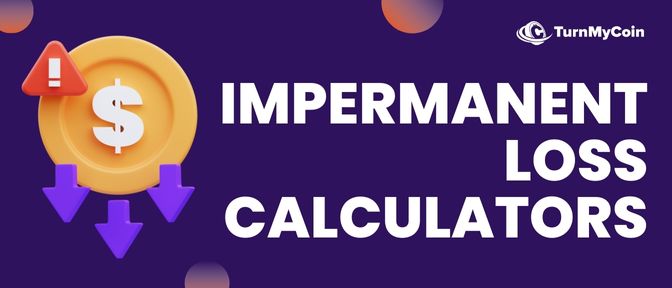
Several Impermanent loss calculators online can help investors determine the potential risks of depositing assets into specific liquidity pools. The following are a few options:
1. Daily Defi
Daily Defi defines a resource for the decentralized finance space, providing useful resources and information.
This website attempts to make the best attempt at providing correct and up-to-date information, but this information is presented without warranty and with no guarantees.
2. Whiteboard crypto
Whiteboard Crypto is an online tools provider about crypto a token world. Here you can get tutorials as well as calculators. The website contains lots of calculators, like a profit calculator and other calculators.
This Calculator can be used to calculate and compare different cryptocurrencies, Detailed knowledge about crypto space.
3. Coingecko
This calculator estimates the potential impermanent loss. When you provide liquidity based on the weighting of your asset portfolio and the percentage change expected in those assets.
It does not consider any trading fees earned, which may help cushion impermanent losses. If you’re planning to use this calculator, you must have an accurate picture of your current portfolio holdings.
You should also be aware of each trade’s potential frequency and duration so that you can estimate how long it will take for the markets to recover from a decline in value.
4. Decent Yields
DecentYields is an in-depth website that provides users with the best insights for yield return from the lending and liquidity pools within DeFi.
The website also offers a detailed impermanent loss calculator. Yields returned by lending and liquidity pools may vary dramatically depending on a number of factors, such as the type of loan or collateral offered by borrowers.
DecentYields offers a comprehensive analysis of all current lending pools, their historical performance, and projected growth rates.
Why be a liquidity provider?
A Liquidity Provider is one who adds cryptos to the Liquidity Pool. There is a high chance of impermanent loss if you are a liquidity provider, but there are also many benefits to being a liquidity provider.
Liquidity providers can expect to experience both short-term and long-term losses, but you must also take the interest rate they receive on their tokens into account.
If this interest rate generates higher returns than the amount lost through impermanent loss, then a liquidity provider can expect more profit than simply holding the tokens.
When you add liquidity to a Defi platform, you are providing the platform with funds for other users’ trades. This can be done by buying or shorting assets on the platform or by investing in pools of other users’ assets.
The more money you put into a pool, the more significant your stake in that pool and the more you can earn from it.
Defi platforms have also been rewarding users for adding liquidity to their pools. This is usually done by giving rewards based on the size of their stake in the collection. This can further increase liquidity providers’ profit and decrease impermanent loss’s impact.

Conclusion
By learning how to protect yourself from losing your crypto assets, you can better grip your holdings and be confident enough to invest more without fear.
Understanding the concept of impermanent loss is essential because the more you know, the better you will avoid it. The knowledge that comes from this article will help put you ahead of the game.
Ultimately, it all comes down to your personal view of cryptocurrency. Investing in cryptocurrency is a high-risk activity. However, if you invest wisely and research the scene thoroughly, you will minimize your risk.
Being educated and prepared is never going to leave you broke. ― Peak: Bitcoin and Cryptocurrency Investments Are Becoming Less Risky Than Founding an Internet Startup.
Impermanent loss is the tragic fact that some people will permanently lose their money. It’s not your fault, and it’s not your responsibility to fix the problem.
One of the best ways to overcome impermanent loss is to look beyond it. Let your trading tokens do their job—earning you fees. The more you put into the equation, the less you might get out of it.
